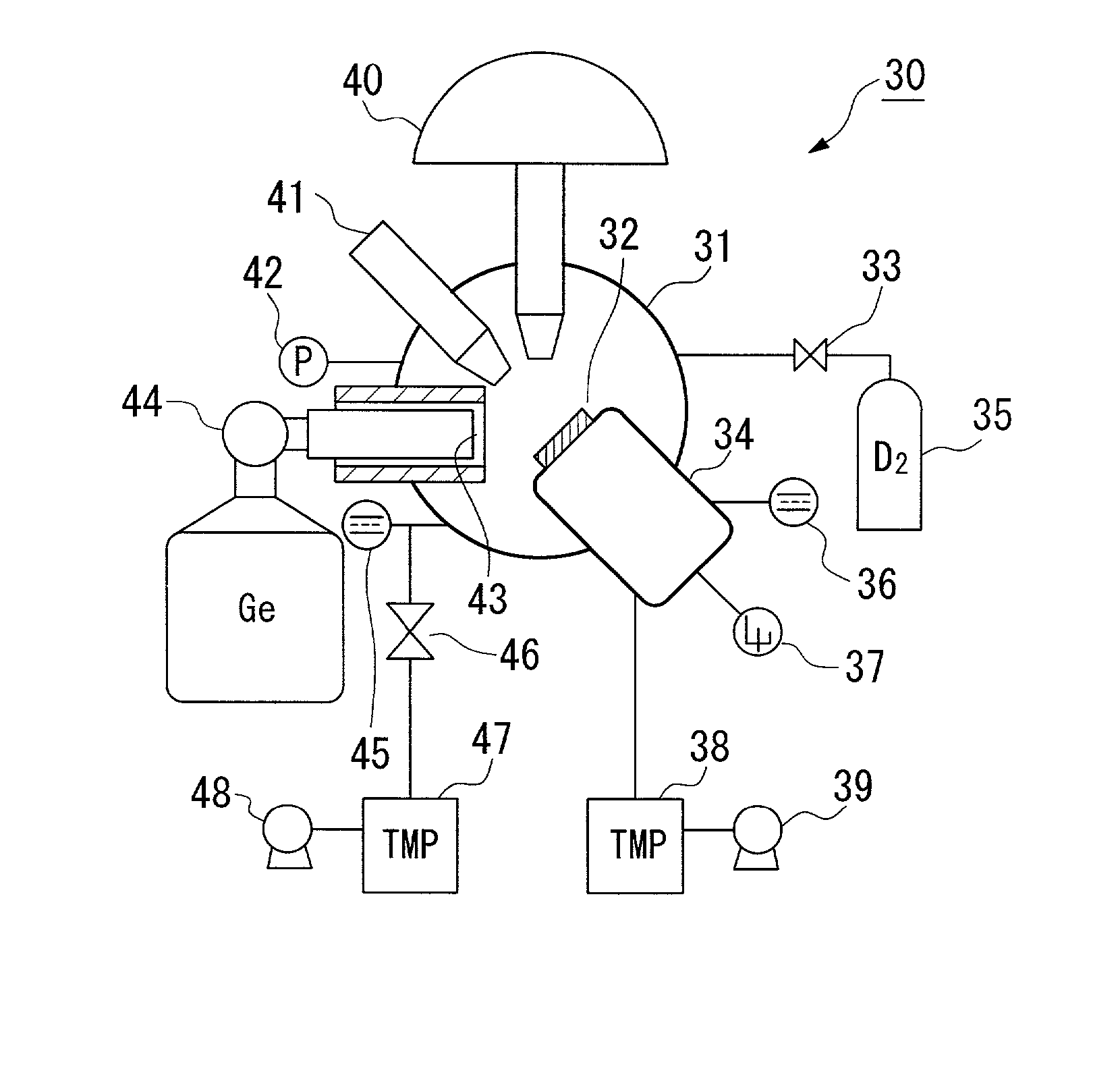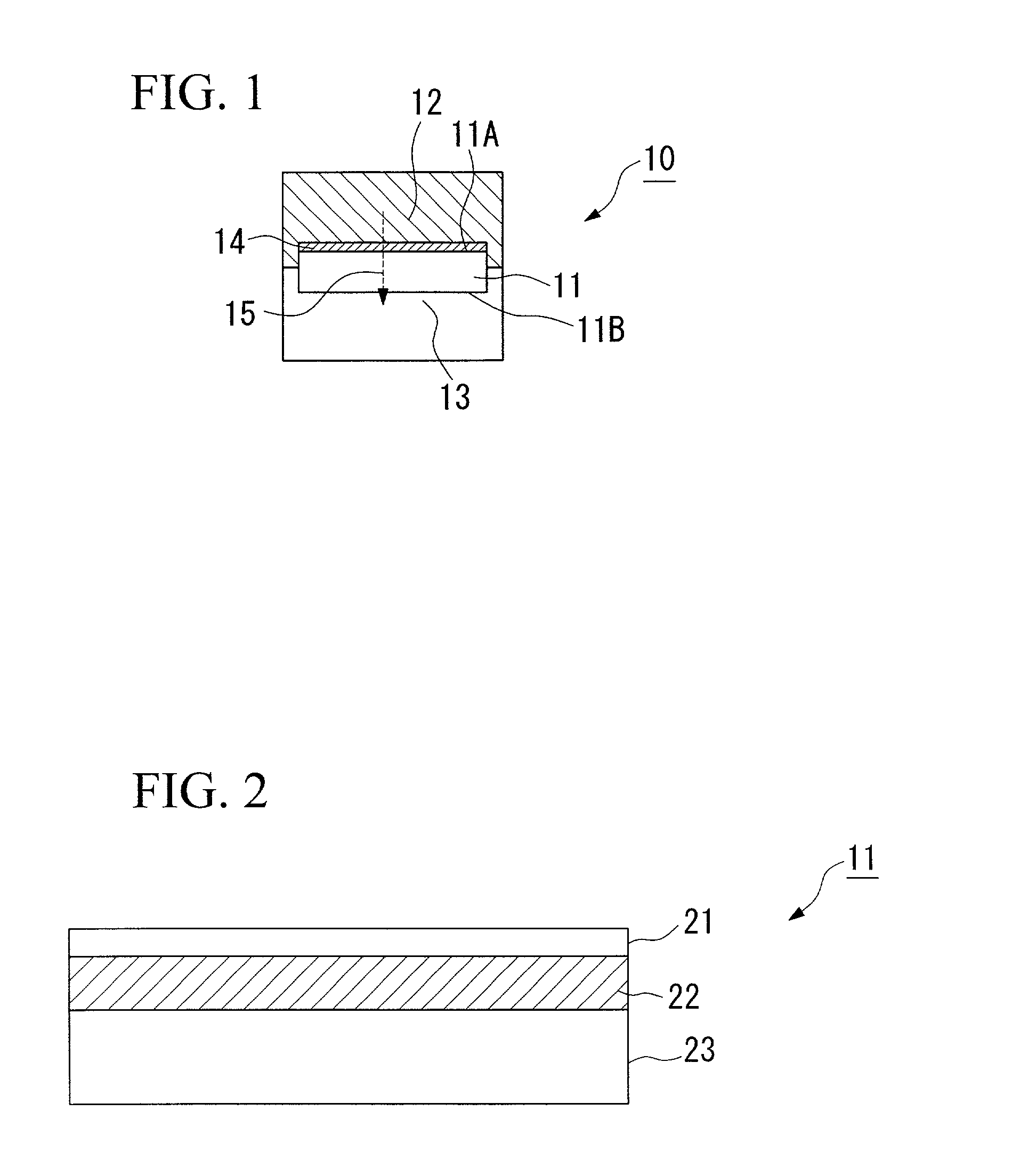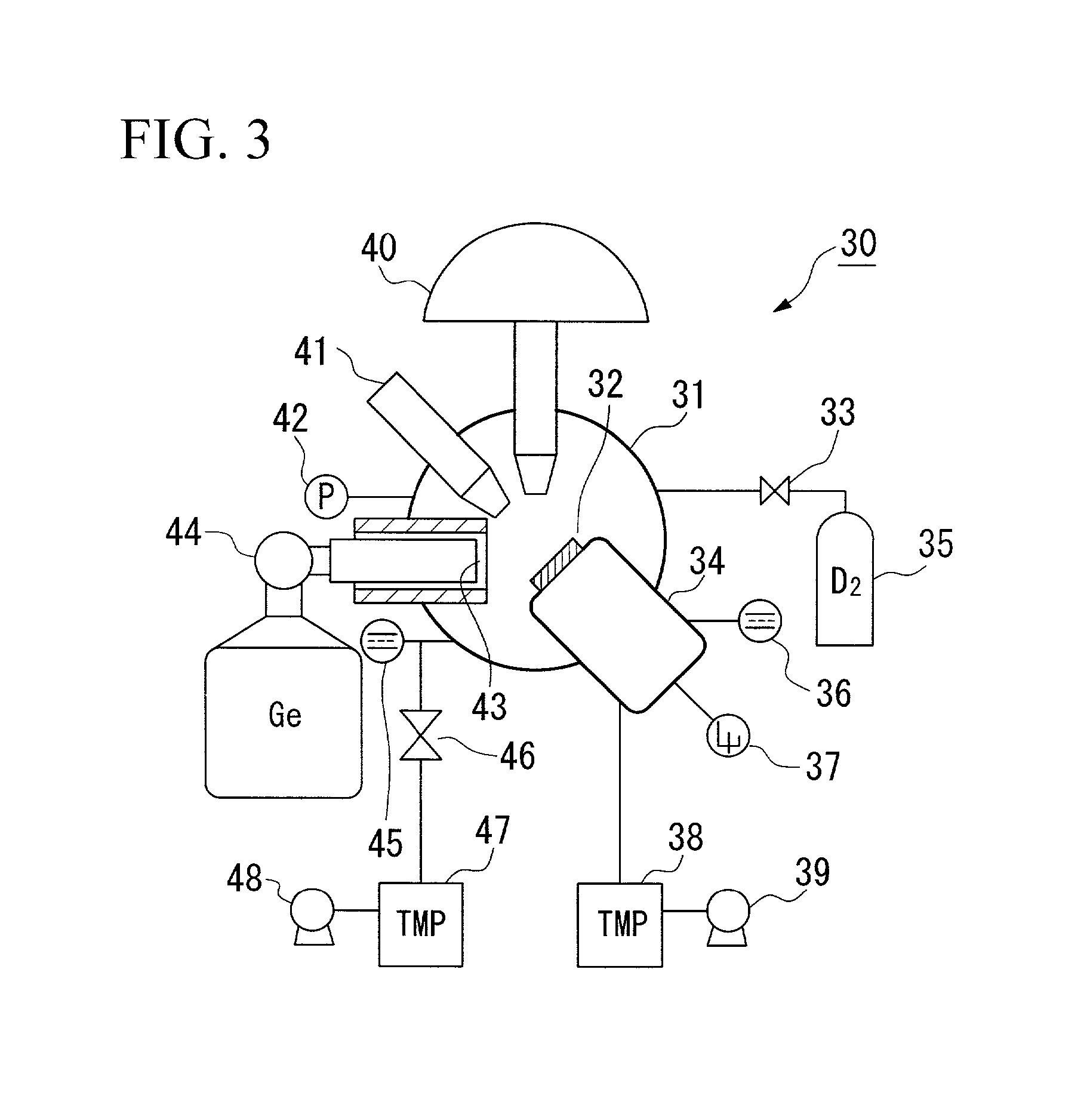Nuclide transmutation device and nuclide transmutation method
a nuclide and transmutation device technology, applied in nuclear reactors, nuclear explosives, greenhouse gas reduction, etc., can solve the problems of large-scale and high-cost apparatuses, difficult processing of long-lived radioactive nuclear fission products, and dramatic increase in the cost of nuclide transmutation
- Summary
- Abstract
- Description
- Claims
- Application Information
AI Technical Summary
Benefits of technology
Problems solved by technology
Method used
Image
Examples
example six seven eight na 430 25 16 56 (ppm) 0.08
6 0.005 0.003 0.011 (g) 2.3 .times. 10.sup.21 1.3 .times. 10.sup.20 8.4 .times. 10.sup.19 2.9 .times. 10.sup.20 (Atoms) Al <1 410 420 310 (ppm) <2 .times. 10.sup.-4 0.082 0.084 0.062 (g) <2 .times. 10.sup.18 1.8 .times. 10.sup.21 1.9 .times. 10.sup.21 1.4 .times. 10.sup.21 (Atoms)
[0187] As shown in Table 2, in the electrolyte solution 84 before the commencement of the experiments, the Na was at 430 ppm, and Al was equal to or less than the detection limit of 1 ppm.
[0188] In contrast, after the nuclide transmutation experiment, the Na became several tens of ppm, a value being one order lower, and the Al had become several tens of a ppm. The change in the electrolyte solution 84 after the commencement of the experiment carried out only electrolysis by providing current from the power source 81, and other materials were not introduced from the outside.
[0189] In addition, regarding the number of atoms (Atom, in Table 2), it could be confirmed that the decreased number of Na atoms fell f...
third embodiment
[0194] Below, the nuclide transmutation device and the nuclide transmutation method according to the present invention are explained with reference to the attached drawings.
[0195] FIG. 22 shows a structure of the nuclide transmutation device 100 according to the third embodiment of the present invention.
[0196] The nuclide transmutation device 100 according to this embodiment comprises a desorption chamber 101 having an interior that can be maintained in an airtight state, an absorption chamber 103, disposed inside of the desorption chamber 101 and having an interior that can be maintained in an airtight state through a multilayer structure body 102, a deuterium tank 106 for supplying deuterium into the absorption chamber 103 through a regulator valve 104 and a valve 105, a pressure meter 107 for detecting the inside pressure of the absorption chamber 103, a connecting pipe 109 for connecting the desorption chamber 101 and a absorption chamber 103 through a vacuum valve 108, a turbo-...
first embodiment
[0214] In addition, in spite of the fact that the present nuclide transmutation device and the multilayer structure body differ from the nuclide transmutation device 30 and the multilayer structure body both of the nuclide transmutation devices and multilayer structure bodies are confirmed to be able to carry out the nuclide transmutation such as from Cs to Pr successfully, which results in showing the substantial effectiveness of the present invention.
[0215] In addition, in the first embodiment, the second embodiment, and the third embodiment of the present invention described above, palladium (Pd) was used as the metal for absorbing the hydrogen, but the invention is not limited thereby, and a Pd alloy, or, for example, another metal that absorbs hydrogen, such as Ti, Ni, V, or Cu, or an alloy thereof can be used.
[0216] As explained above, according to the first aspect of the nuclide transmutation device of the present invention, nuclide transmutation can be carried out with a re...
PUM
| Property | Measurement | Unit |
|---|---|---|
| work function | aaaaa | aaaaa |
| depth | aaaaa | aaaaa |
| width | aaaaa | aaaaa |
Abstract
Description
Claims
Application Information
 Login to View More
Login to View More - R&D
- Intellectual Property
- Life Sciences
- Materials
- Tech Scout
- Unparalleled Data Quality
- Higher Quality Content
- 60% Fewer Hallucinations
Browse by: Latest US Patents, China's latest patents, Technical Efficacy Thesaurus, Application Domain, Technology Topic, Popular Technical Reports.
© 2025 PatSnap. All rights reserved.Legal|Privacy policy|Modern Slavery Act Transparency Statement|Sitemap|About US| Contact US: help@patsnap.com



